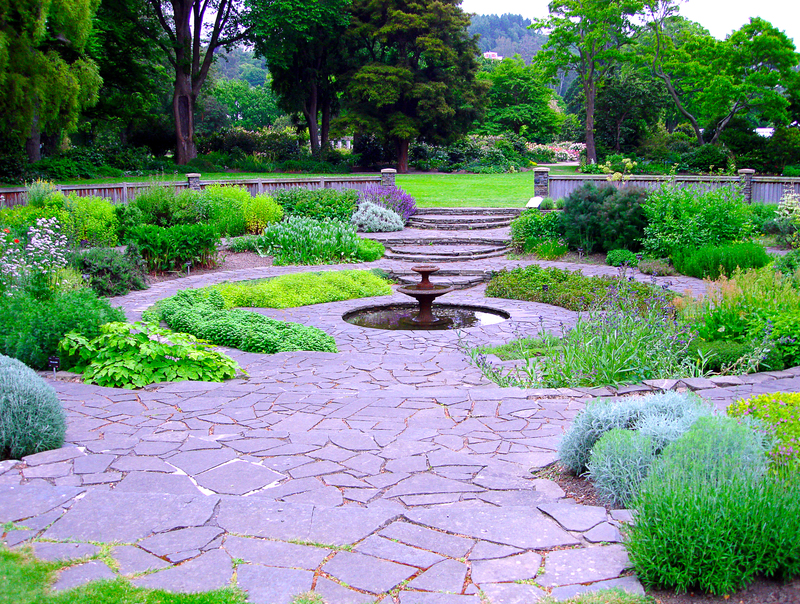Reflective Spaces: Crafting a Zen Garden of Tranquility
Posted on 07/09/2025
Reflective Spaces: Crafting a Zen Garden of Tranquility
In the fast-paced rhythm of modern life, finding moments of peace is essential. Imagine stepping into a sanctuary where your senses calm and your spirit reconnects with nature--this is the essence of a Zen garden. Reflective spaces nurture mindfulness, promote well-being, and create a daily retreat from the chaos of the outside world. This comprehensive guide will explore how to craft your own Zen garden of tranquility, turning any outdoor (or indoor) area into a haven for reflection and inner peace.
What Is a Zen Garden? Unveiling the Concept of Reflective Spaces
A Zen garden, or karesansui (Japanese rock garden), is a minimalist landscape designed to inspire serenity, contemplation, and harmony. Originating in Japan during the Muromachi Period (1336-1573), Zen gardens have graced temple grounds and private homes for centuries, embodying Buddhist principles and the philosophy of wabi-sabi--finding beauty in imperfection and simplicity.
- Reflective gardens employ rocks, gravel, sand, and carefully chosen plants to symbolize elements like water, mountains, and the void.
- The absence of clutter and ornamentation draws attention to every detail, fostering mindfulness.
- Tranquil Zen landscapes serve both spiritual and practical purposes, inviting meditation and offering an escape from stress.
Why Choose a Reflective Space for Your Home?
Integrating a scenic haven of tranquility into your environment has profound benefits:
- Stress reduction: Gentle raking patterns and soothing natural elements calms the mind and body.
- Improved focus: Minimalist design reduces distractions and enhances concentration.
- Personal expression: Your Zen garden reflects your unique taste and intention.
- Connection with nature: Even a small reflective space offers a window to the rhythms of the natural world.

Principles of Creating a Zen Garden of Tranquility
Building a Zen garden is both an art and a mindful practice. Here's how you can craft a reflective space infused with tranquility:
1. Simplicity and Minimalism
The heart of a Zen garden is its simplicity. Rather than filling the space with elaborate decor, focus on a few perfectly placed elements.
- Use limited materials--such as stone, sand, and select greenery--to maintain a clean aesthetic.
- Leave open areas to represent emptiness and the concept of ma, or negative space.
2. Symbolism and Metaphor
Each feature in a Zen landscape represents a philosophical idea:
- Rocks symbolize mountains, islands, or living beings.
- Sand or gravel stands for water, raked into flowing patterns to evoke streams and waves.
- Moss and plants represent the persistence of life and the passage of time.
Reflective gardens invite contemplation through these metaphors, offering deeper meaning beyond their physical beauty.
3. Balance and Asymmetry
Instead of symmetrical layouts, Zen gardens use the principle of 'fukinsei' (asymmetrical balance). This approach mirrors natural landscapes and encourages a sense of effortless harmony.
- Arrange rocks and shrubs in odd groupings (three, five, or seven) to mimic natural clusters.
- Offset focal points instead of centering them, leading the viewer's eye through the garden in a quiet journey.
4. Mindful Flow and Movement
The gentle curves and flowing lines in your reflective space should guide visitors on a virtual journey. Paths or raked patterns suggest water's movement, while stepping stones offer places for pause and renewal.
5. Harmony with Surroundings
A true Zen garden integrates seamlessly with its environment. Use local materials and respond to the rhythms of sun, shade, and seasonal change. This harmony reinforces the garden's tranquility and authenticity.
Essential Elements of a Reflective Zen Garden
1. Rocks and Stones
Stones are the backbone of any tranquil landscape, representing stability and endurance.
- Select distinct rocks with varied shapes, textures, and colors.
- Arrange large stones for focal points, with smaller accents to create depth and interest.
- Bury stones partially to evoke natural outcroppings, rather than perching them on the surface.
2. Sand & Gravel
Sand or gravel forms the "ocean" in a Zen garden, inviting meditation through raking patterns.
- Use fine gravel for easier pattern-making and lower maintenance.
- Draw wavy or spiral lines to symbolize water, ripples, or clouds--refreshing them regularly as a meditative ritual.
3. Moss & Greenery
Limited greenery in a reflective sanctuary draws attention to impermanence and tranquility.
- Moss thrives in shaded, damp gardens and provides lush contrast to stone and sand.
- Place low-maintenance evergreens (such as Japanese boxwood or mugo pine) to represent the eternal.
- Consider bamboo, ferns, or ground covers to soften pathways.
4. Water Features
While traditional karesansui gardens represent water with stone and sand, you may introduce real water features:
- Place a small bamboo fountain (shishi-odoshi) for soothing sound and movement.
- Add a reflective pond or basin to enhance the sense of serenity.
Even the suggestion of water through raked gravel supports introspection in your tranquil retreat.
5. Bridges, Paths, and Stepping Stones
Encourage reflective movement through your garden by introducing subtle pathways:
- Scatter stepping stones to prompt slow, intentional walking.
- Curved pathways add mystery and unfold new views at each turn.
- A small wooden bridge can symbolize the journey between worlds--earthly and spiritual.
6. Decorative Features
Every element in a Zen sanctuary should serve a purpose, but a few accents add unique character:
- Lanterns provide gentle illumination for evening reflection.
- Bamboo screens or fences offer privacy.
- Benches or meditation platforms create dedicated spaces for contemplation.
Step-by-Step Guide: Crafting Your Own Zen Retreat
Step 1: Choose Your Location
Ideally, select a quiet corner of your garden, yard, or balcony. If outdoors isn't possible, a small indoor reflective space can be equally effective.
- Assess sunlight, privacy, and how the garden will interact with your home.
- Define boundaries using natural materials like wood, bamboo, or stone.
Step 2: Plan the Layout
Sketch your design to scale, considering the placement of major features:
- Place the largest stones first, anchoring them asymmetrically.
- Map areas for sand or gravel, indicating raking patterns you wish to try.
- Designate spots for greenery and any water features.
Step 3: Prepare the Site
- Clear weeds, debris, and old plantings.
- Level the ground and install landscape fabric to suppress weeds.
- Add a border or edging to contain sand and gravel neatly.
Step 4: Install Hardscape and Rocks
- Arrange stones guided by your sketch, partially burying them for a natural look.
- Add stepping stones or pathways if desired.
Step 5: Add Sand or Gravel
- Pour a 2-3 inch layer evenly over designated areas.
- Use a wide-toothed rake to create the first flowing patterns. Take your time--this is part of the meditative process!
Step 6: Plant Greenery and Moss
- Insert shade-loving moss or ground cover around stones and in moist areas.
- Position evergreens, bamboo, or ferns for subtle color and softness.
Step 7: Finish with Accents
- Install lanterns, benches, or small water features as desired.
- Consider adding a simple bamboo fence or screen for privacy.
Maintenance Rituals for Serenity and Mindfulness
Regular care of your Zen garden helps maintain its beauty while fostering mindful presence:
- Rake the gravel: Refresh patterns regularly--this small act can be meditation in motion.
- Prune and weed: Keep plants tidy and free from intruding weeds.
- Clean stone and accents: Wipe lanterns, bridges, and benches to preserve their luster.
The process is as important as the product. Each maintenance ritual is an opportunity to pause, breathe, and reconnect with the present moment.
Tips for Enhancing Zen Garden Tranquility
- Incorporate scents--Plant lavender, jasmine, or pine for gentle fragrance.
- Balance sound--Bamboo wind chimes or a soft fountain create calming background ambience.
- Use natural colors--Stick to earth tones and greens for a harmonious palette.
- Bring the indoors out--Add comfortable seating or cushions to encourage longer stays.
Reflective Zen Spaces Indoors: Creating a Miniature Sanctuary
Not everyone has access to a full outdoor area, but you can still cultivate a reflective space filled with tranquility indoors:
- Use a tabletop tray with sand, a few smooth stones, and a mini rake.
- Grow small bamboo or bonsai for an authentic touch.
- Set up your garden near a window, where natural light and outside views add serenity.
A desktop Zen garden encourages peaceful moments during a busy workday and integrates mindfulness into your routine.

The Psychology of Reflective Garden Spaces
Why does a Zen garden inspire calm? The mindful act of crafting reflective spaces harmonizes the senses, reduces cortisol, and encourages a state of flow. The focus on natural elements--rock, foliage, water--grounds us in the present, while the simplicity of design calms our thoughts.
Multiple studies confirm that spending time in tranquil landscapes reduces anxiety, improves mood, and stimulates creativity. Incorporating a Zen retreat in your environment is a proactive step toward holistic well-being.
Conclusion: Building Your Personal Zen Retreat
In a world that rarely slows down, cultivating a Zen garden of tranquility gives you a sacred space to breathe, reflect, and restore. Whether sprawling or petite, outdoors or in, a reflective sanctuary nurtures your senses and celebrates the profound beauty of simplicity.
As you shape ripples in gravel or meditate by a mossy stone, you're not only crafting a peaceful outdoor oasis--you are also creating a daily ritual that honors stillness, insight, and the grace of the present moment.
- Ready to begin your journey into tranquility?
- Gather your tools, select your favorite stones, and let the design unfold intuitively.
- May your reflective Zen garden bring you years of peace, joy, and inner harmony.

